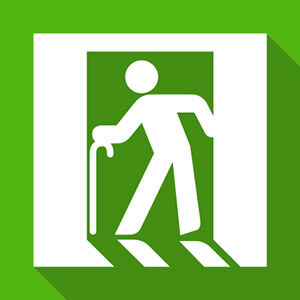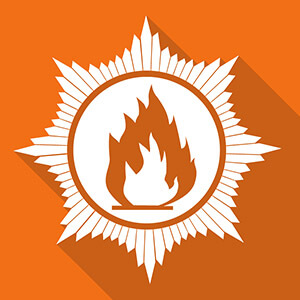
Level 1 Health and Safety Accredited Exam (CSCS Course)
This course is designed to train you in construction site health and safety, as well as preparing you for the exam you will take at the end of the training. Upon successful completion of the exam included in this course, you will be able to use this qualification to apply for your Green CSCS Card.
The course includes a wide variety of health and safety areas to ensure that you are kept safe on site.

Asbestos Training
This course covers all areas of asbestos awareness and is designed for anyone who may come into contact with asbestos in their work. Most commonly, that includes builders, plumbers, electricians, carpenters and other building related and maintenance trades. The course consists of 4 modules with questions at the end. The modules cover areas such as recognising asbestos, where it is used, minimising the risks and legislation about working with asbestos.

Asbestos for Architects & Designers
This course covers the same subjects as our Asbestos Awareness course with an additional module aimed specifically at architects and designers working with buildings that may contain asbestos. It provides information about the legislation governing asbestos in work and outlines the responsibilities of architects and designers.

Abrasive Wheels
This course is aimed at anyone who uses abrasive wheels, or employs people who use abrasive wheels as part of their work. Different wheels will have different properties and characteristics suitable for particular tasks. They also have different weaknesses and can pose different risks and hazards in handling and use. For this reason, it’s important that you always select the right abrasive wheel for the job and use it with the right machinery.

Control of Substances Hazardous to Health (COSHH)
This course covers what you need to know about the Control of Substances Hazardous to Health (COSHH). It’s aimed at anyone who is exposed to Substances Hazardous to Health at work, as well as line managers with responsibility for such people.

Basic Fire Safety
This course will provide candidates with a general understanding of basic fire awareness including what should be done in the event of a fire, how to prevent a fire occurring and a basic introduction of the protocol of extinguishing a fire. It is a cost effective way for employers to fulfil their legal obligation to provide their employees with the necessary understanding of fire awareness.

Basic Fire and Safety in Care Homes
This course covers the same content as the Basic Fire Safety course with additional content tailored specifically for employees that work in care homes.

Emergency First Aid
What is Emergency First Aid? Well it’s exactly that, the first aid to be offered if an incident occurs. Not many of us are confronted with scenes of blood and gore in our everyday lives – so usually first aid could be as simple as sticking a plaster on a small cut. But what if you did find yourself confronted with a more serious situation.
This Emergency aid course will highlight some of the most common situations that you might come across and the actions that you can take to help. In the most serious situations a first aider’s role will be to assess the scene so that accurate information can be passed to Emergency services and then to act appropriately to try and increase the patients odds of survival.

Fire Extinguisher
This course provides training in the use of different types of fire extinguishers and the protocol of tackling a fire.

Fire Marshall
Fire marshals (sometimes known as fire wardens) are civilians trained to assist in emergency fire evacuation procedures at businesses and other organizations.
It is a legal obligation that workplaces must have a sufficient number of fire marshals to deal with fire emergencies. This course provides extensive knowledge of fire prevention, evacuation protocol and using fire extinguishers.

Fire Marshall for Care Homes
This course covers the same content as the Fire Marshal course with additional content tailored specifically for employees that work in care homes.

Legionella Management
This course explains the background to Legionella, the potential risks associated with water systems and how these can be prevented or controlled. It helps you to understand the risk that Legionella poses and helps you develop the systems and working practices you need to stay ahead. It gives you enough knowledge to get a Legionella control programme off the ground yourself – or make confident, informed choices when commissioning others to take this on for you.

Working at Height
This course covers topics including the dangers of working at height, the regulations, the hierarchy of controls, assessing risk and much more.
All working at height situations are covered by health and safety legislation. Chief among these is the Work at Height Regulations 2005. These regulations confer legal duties on employers and employees to assess, control and minimise risks and hazards from work at height.

Working Safely
The course covers why we should work safely, defines hazard and risk, identifying common hazards, improving safety performance and protecting the environment. Training is a big part of changing attitudes towards taking risks in the workplace and can make a real difference.

Manual Handling
Manual handling, or to be accurate, incorrect manual handling, is one of the most common causes of injury at work. To try and combat manual handling problems, the Manual Handling Operations Regulations were introduced.
The Regulations lay out duties for both employees and employers. They give a general requirement that employees must be trained to manually handle correctly including the use of any equipment their employer provides to handle loads safely.

Display Screen Equipment Awareness
These courses are aimed at users of display screen equipment (DSE) and those responsible for assessing display screen equipment. A ‘user’, is anyone who regularly uses display screen equipment for a significant part of their normal work. In practice, if you use display screen equipment continuously for more than one hour a day, then you’re a ‘user’.

Assessing Display Screen Equipment
The Health and Safety (Display Screen Equipment) Regulations contain special directives covering DSE safety. Both employers and employee‐users have responsibilities under the legislation. This course fulfils your statutory training obligations and covers among other things, the correct way to set up and use your display screen equipment safely. Reducing the risk of work related conditions

